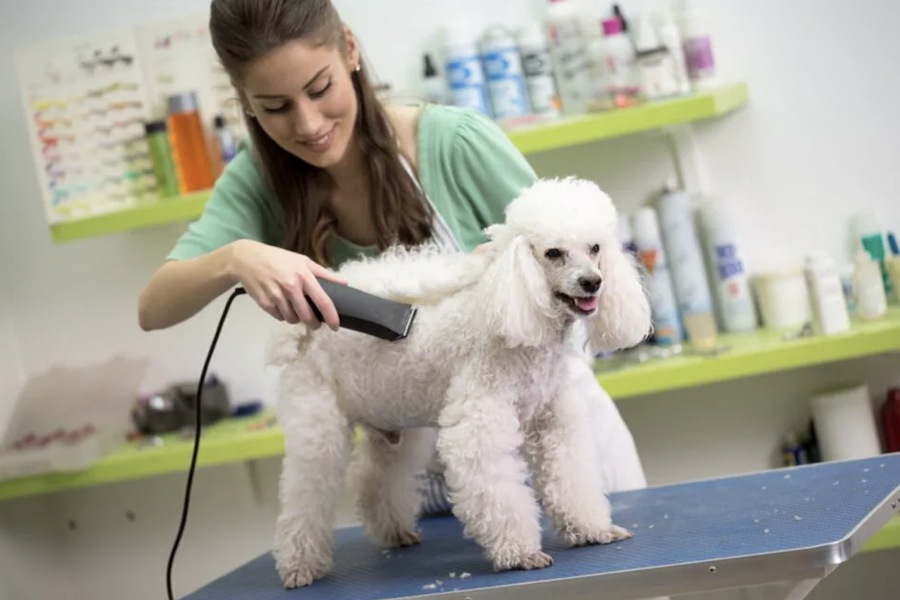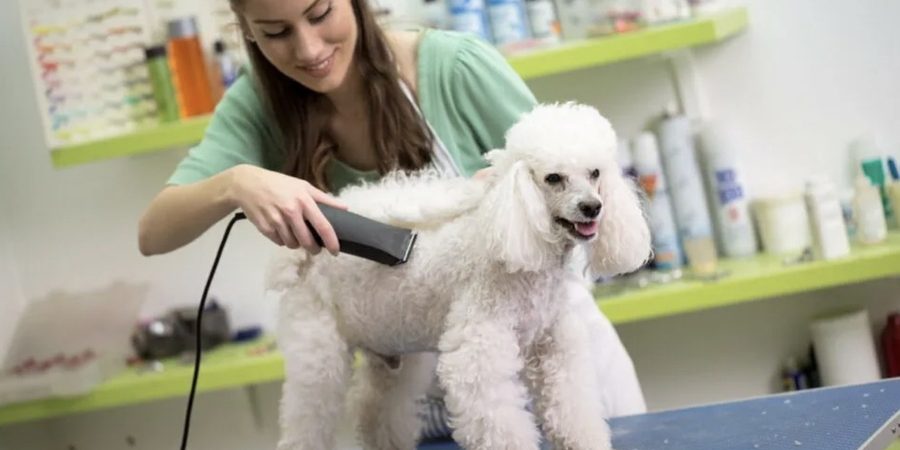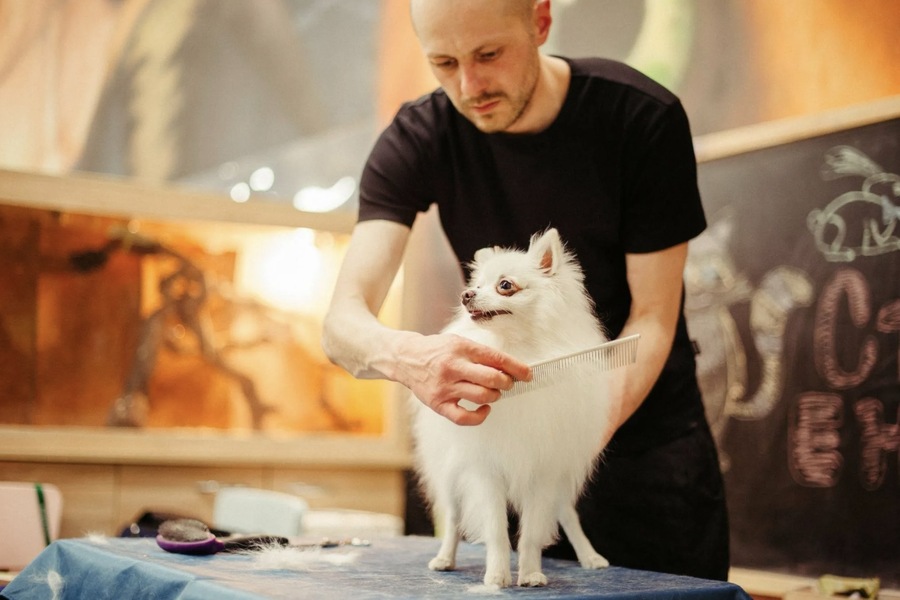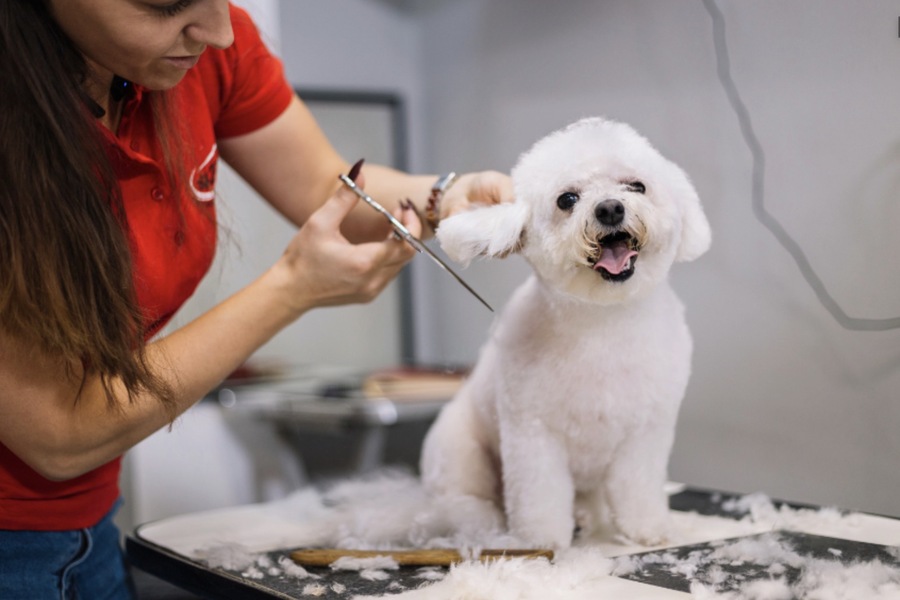In Dubai and the UAE, pet ownership is increasingly popular, accompanied by a heightened demand for services that support both pet health and behavior. Among these, pet grooming plays a pivotal role not only in maintaining a pet’s appearance but also in influencing behavioral development. For many pet owners, grooming is simply a hygiene practice. However, grooming can also enhance socialization and contribute to effective behavioral training when incorporated regularly. This article explores how consistent grooming sessions can benefit pet behavior, providing valuable insights for pet owners and professionals in the UAE.
Page Content
The Role of Regular Grooming in Pet Behavior
Grooming is more than a physical necessity; it has a psychological component that can profoundly influence a pet’s demeanor and temperament. When pets experience regular grooming, they develop a familiarity with being handled and touched, particularly in sensitive areas such as the face, paws, and tail. This handling plays an essential role in desensitizing pets to touch, reducing anxiety and fostering calmness in various situations. Pets that undergo frequent grooming learn to tolerate unfamiliar handling, which is often an important part of behavioral training.
Building Trust through Routine Grooming
Establishing trust between pets and humans is critical for harmonious behavior, especially with species or breeds known for sensitivity. Repeated grooming sessions create a predictable routine, where pets become accustomed to their caregiver’s touch, scent, and voice. Trust is reinforced with each session, teaching pets to associate grooming with a safe, non-threatening experience. Pets that feel secure during grooming are more likely to exhibit cooperative behavior, which can translate into a more positive reaction to training and handling in other settings, such as veterinary visits or public outings.
Reducing Fear and Anxiety with Desensitization
Fear and anxiety can lead to behavioral issues such as aggression, barking, or avoidance. Consistent grooming helps mitigate these behaviors by gradually desensitizing pets to new sensations, sounds, and sights they may find intimidating. For instance, the noise of clippers, the sensation of brushing, or the sight of water are aspects that pets may initially find unsettling. Through repeated exposure, pets learn that these stimuli pose no threat, which significantly lowers their stress responses. Over time, reduced anxiety enhances a pet’s adaptability, which is an invaluable trait during behavioral training sessions.
Positive Reinforcement during Grooming
Effective behavioral training relies on positive reinforcement, and grooming offers an opportunity to apply this method. Pet owners or groomers can provide treats, verbal praise, or gentle petting during and after grooming to reward good behavior, such as staying still or allowing a specific area to be groomed. This positive reinforcement encourages desirable behavior and teaches pets to associate grooming with rewarding experiences. The concept of reward-based training aligns well with behavioral conditioning, supporting obedience and cooperation in pets during training exercises beyond grooming.
Socialization with New Environments and People
Grooming salons in Dubai and the UAE expose pets to new environments, scents, and people, which can play a vital role in their socialization. This exposure is especially beneficial for puppies and younger pets who are still adapting to the world around them. Meeting other pets and being handled by professionals introduces pets to different situations, which can ease their transition into various social settings. Exposure to diverse environments reduces the likelihood of fear-based reactions and prepares pets to behave calmly in public spaces or other unfamiliar locations.
Grooming as a Controlled Setting for Behavioral Observations
Routine grooming sessions allow pet owners and groomers to observe and understand their pets’ behavior in a controlled setting. Certain reactions, such as sensitivity to specific areas, restlessness, or signs of fear, can indicate behavioral challenges that may need further attention. Recognizing these behaviors during grooming can help owners identify areas for improvement in training. For example, a pet that shows excessive sensitivity around its paws may need additional paw-handling exercises as part of behavioral training, promoting acceptance of touch and reducing adverse reactions over time.
Enhancing Patience and Restraint in Pets
Behavioral training often requires pets to practice patience and restraint, two qualities that are also reinforced during grooming. Whether it’s standing still for a bath or allowing their nails to be clipped, pets learn to tolerate extended periods of limited movement during grooming. This patience can translate positively into other scenarios, such as waiting calmly in crowded areas or responding appropriately to commands. Training pets to hold still during grooming not only makes the process more manageable but also prepares them for situations where patience is essential.
Preparing Pets for Veterinary Visits and Handling
Regular grooming can be an effective precursor to veterinary visits, as both experiences often require pets to endure physical examinations, touching, and restraint. Pets that are familiar with grooming are more likely to stay calm and cooperative during veterinary checks, reducing stress for both the pet and the veterinarian. Since many veterinary procedures in Dubai’s animal clinics necessitate close handling, grooming’s preparatory role is invaluable, ensuring pets handle medical visits with ease. This familiarity can lessen anxiety and make healthcare routines more manageable.
The Impact of Grooming on Aggression Management
For some pets, aggression stems from a lack of socialization or negative associations with specific actions, such as touching sensitive areas. Regular grooming addresses this by conditioning pets to associate handling with neutral or positive experiences. Pets that undergo consistent grooming are less likely to display aggression when touched unexpectedly, as they become more tolerant of handling. In cases where pets exhibit aggressive behavior due to fear, gradual grooming can serve as a form of exposure therapy, helping pets adjust their responses to uncomfortable situations.
The Long-Term Benefits of Consistent Grooming for Obedience
The link between grooming and obedience becomes more pronounced over time. Pets that experience regular grooming sessions are more likely to develop a cooperative attitude, as they come to accept grooming as part of their routine. This obedience can make behavioral training easier, as pets respond positively to instructions and remain focused during training sessions. Consistent grooming instills discipline and routine, two key components of successful behavioral conditioning. Pet owners in Dubai and the UAE can find long-term benefits in behavior and social skills with a commitment to regular grooming.
Health and Behavior Connection: The Role of Grooming
Regular grooming helps in detecting skin issues, parasites, or physical sensitivities early on, which can affect a pet’s behavior if left untreated. For example, a pet with undiagnosed skin irritation may react negatively to touch, displaying behavior that appears aggressive or anxious. By identifying and addressing these issues through grooming, pet owners can avoid behavioral problems that stem from health concerns. Early detection and treatment lead to improved overall well-being, reducing discomfort that might otherwise affect a pet’s temperament and cooperation.
Educating Pet Owners on Behavioral Signals through Grooming
Grooming sessions provide an excellent opportunity for pet owners to learn about their pets’ body language and behavioral cues. For example, subtle signals such as a pet pulling away, tensing up, or showing resistance can reveal discomfort or stress that may require further training. By understanding these cues, pet owners become better equipped to handle behavioral training with sensitivity and awareness. Knowledge of these behavioral indicators can enhance the effectiveness of training, fostering a stronger bond and better communication between pets and their owners.
Addressing Breed-Specific Behavioral Traits through Grooming
In Dubai, pet owners often favor certain breeds, each with unique behavioral characteristics and grooming requirements. Regular grooming allows pet owners to address breed-specific behavioral traits, such as the independent nature of some cat breeds or the social tendencies of certain dog breeds. Understanding these traits enables more targeted behavioral training. Grooming routines tailored to a pet’s breed can ensure that the pet receives the socialization and handling it needs, supporting behavior that aligns with its natural instincts and temperament.
Conclusion
Regular grooming offers a range of behavioral benefits for pets, from enhancing socialization skills to supporting obedience training. In Dubai and the UAE, where pet ownership is increasingly popular, the role of grooming in behavioral development holds significant relevance. Grooming not only fulfills a pet’s hygiene needs but also shapes its behavior, fostering patience, tolerance, and a positive response to new experiences. Pet owners who incorporate grooming as part of their routine can help their pets develop a balanced demeanor, preparing them for social interactions and various training scenarios. With the potential to improve a pet’s adaptability and comfort in diverse environments, grooming stands as a fundamental practice that extends beyond aesthetics to play a vital role in behavioral well-being.




